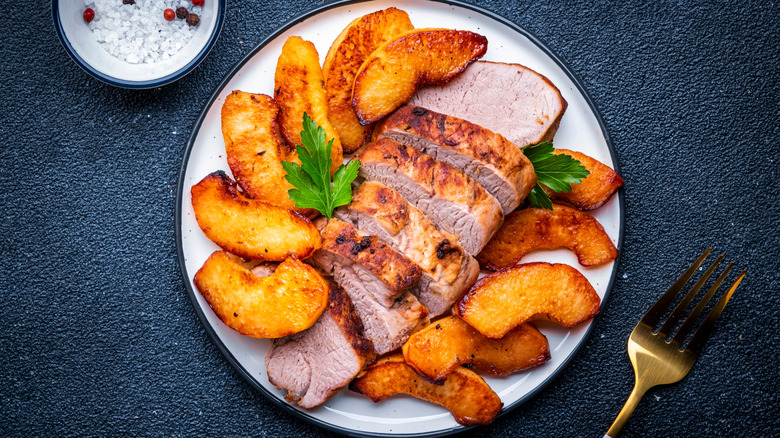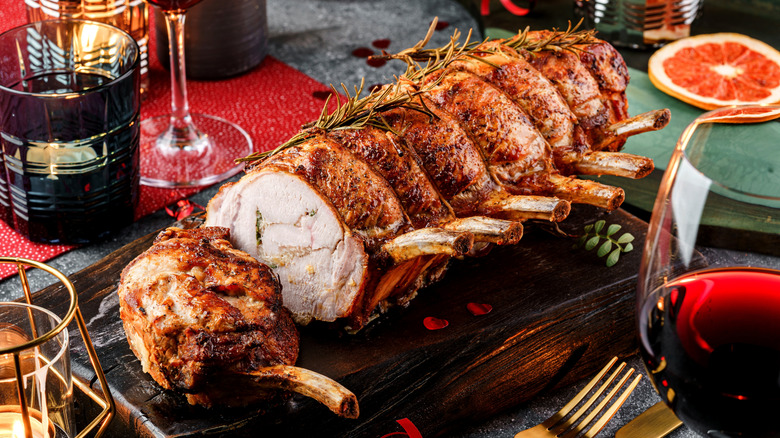Does Red Or White Wine Pair Better With Pork?
Being well-versed in the world of wine pairings can turn a great meal into an extraordinary one. While most people probably understand that a bold red is the best choice to serve with steak, the guidelines aren't as clear-cut for other types of protein. The general rule of thumb is to choose a red wine if you're having red meat, like steak or lamb. If the cut is lean, you can choose a lighter red. Seafood and white meat, such as chicken or turkey, are best served with a white wine. But what about pork? It's nicknamed "the other white meat," but the U.S. Department of Agriculture considers it red meat due to the amount of a particular protein called myoglobin, which is responsible for transporting oxygen to muscle cells and affects the color of the meat.
So if you know pork is on the menu, what wine should you choose? The answer isn't as straightforward as simply "red" or "white." Since pork is a versatile protein that can produce lean cuts, such as pork tenderloin, or more decadent, fattier options like pork belly, you need to take a few things into consideration before choosing your wine. The cut of pork, preparation, and any accompanying sauces or seasonings are all important things to think about before landing on a bottle.
Understanding the science behind your wine choice
The reason some wines pair better with particular meats is due to the amount of tannins present in the wine. Tannins are a chemical compound found in some plants that affect their taste. Many would describe tannins as bitter, astringent, or even sharp — think coffee, chocolate, and tea. Grapes have tannins in their skin and seeds, which therefore means your wine contains tannins, though red wines have significantly more than white wines. So, what role does this play in your choice of pork? The tannins in red wine cut through the richness of fattier cuts of meat, so if you're having pork belly, a light red such as pinot noir would be a good choice. A bolder red runs the risk of overpowering the flavor of the pork, but a pinot noir is light enough to let the meat shine while still cutting through the fat.
The best choice of wine for leaner cuts like pork chops or pork tenderloin is something with low tannins. A crisp white wine, such as Riesling or Chardonnay, won't overpower the delicate flavor of the meat. If your dish is being served with a cream sauce or any hints of citrus or herbs — think pork tenderloin with a lemon thyme sauce — a white wine will enhance those fresh and bright flavors. Pork served with sweet sauces, like a honey glaze or apple-based sauce, also pair best with a low-tannin white wine. Red wines with a high tannin content can make the sweetness of the sauce taste bitter. While pairing wine with pork may not be as straightforward as steak or fish, remembering these guidelines can help you make the best wine choice for your pork dish every time.

